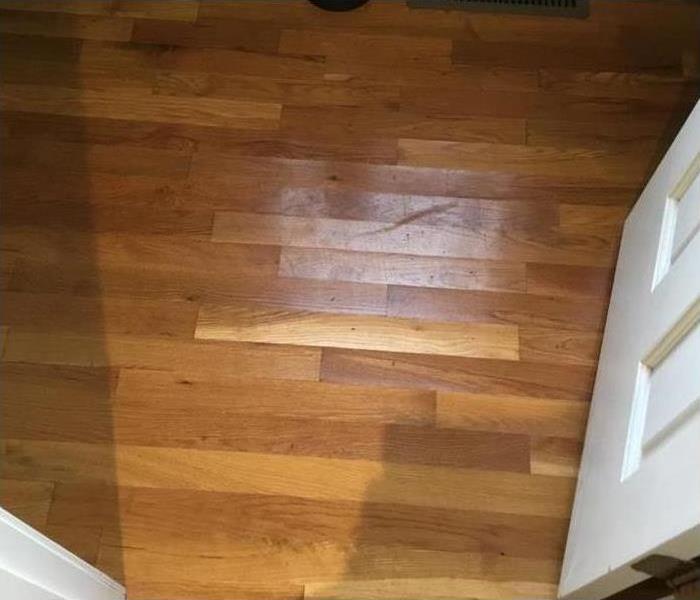Hardwood Floors and Water
6/29/2020 (Permalink)
The importance of cleaning wood floors & woodwork after a water damage
After wood floors have been covered with extensive moisture, they need to be cleaned, flattened and possibly replaced. How is this determined? When do professionals need to be called in?
The answer is, call the professionals. If you have wood floors or woodwork to save, call in the professional cleaners. SERVPRO of Bloomington/Pontiac has trained professionals on mitigation and remediation-they will let you know up front what it takes to save woodwork-and if it’s not.
Before the house dries out, scrub all woodwork with a stiff, but nonabrasive brush, plenty of water and detergent to remove mud and silt from corners, cracks and crevices. Floodwaters tend to accumulate in partitions and exterior walls. Draining these areas as quickly as possible is the most important first step. Insulation and structural pieces can dry properly if the moisture is removed. Remove the baseboard and drill holes between studs a few inches above the floor. This part of the process looks strange-however it allows air to move and dry without having to rip the entire wall out.
If refinishing is necessary, wait until moisture has dried from all wood framings, between walls, floors, and backs of trim. This may take several months-our professional team can place all appropriate equipment and test to have this done as quick as possible. The big question, what happens if the wood floor looks like damage may be setting in.
Wood floors may buckle-There is only so much you can do. Leave them alone to dry. Dry wood as fast as possible without aggravating shrinkage. Open windows and doors wide enough to give good ventilation on dry, non-humid days only. Maintain a temperature of 50 degrees to 60 degrees in the house. Keep fans running to keep the air moving. After the house is dry, there are several possibilities for renovating the floors. Some of the buckled flooring may be pounded into place with nails, some bumps may be removed by planning or sanding down. Heavily planed floors may never be used uncovered, but a smoothed old floor can serve as a base for a resilient hard surface floor covering.
Mold and mildew are common problems with wet wood. Badly infected wood must be replaced. The professionals will let you know if removal is the only option. Clean mildewed floors, woodwork and other wooden parts by scrubbing with appropriate solutions and rinsing with water-then drying-But always call the professionals to test and receive appropriate guidance.
Then apply a mildew-resistant finish.
Don’t give up on your floors-but be diligent, go to professionals, and know where you are with your floors. Call SERVPRO of Bloomington/Pontiac to have your cleanup done right!






 24/7 Emergency Service
24/7 Emergency Service
